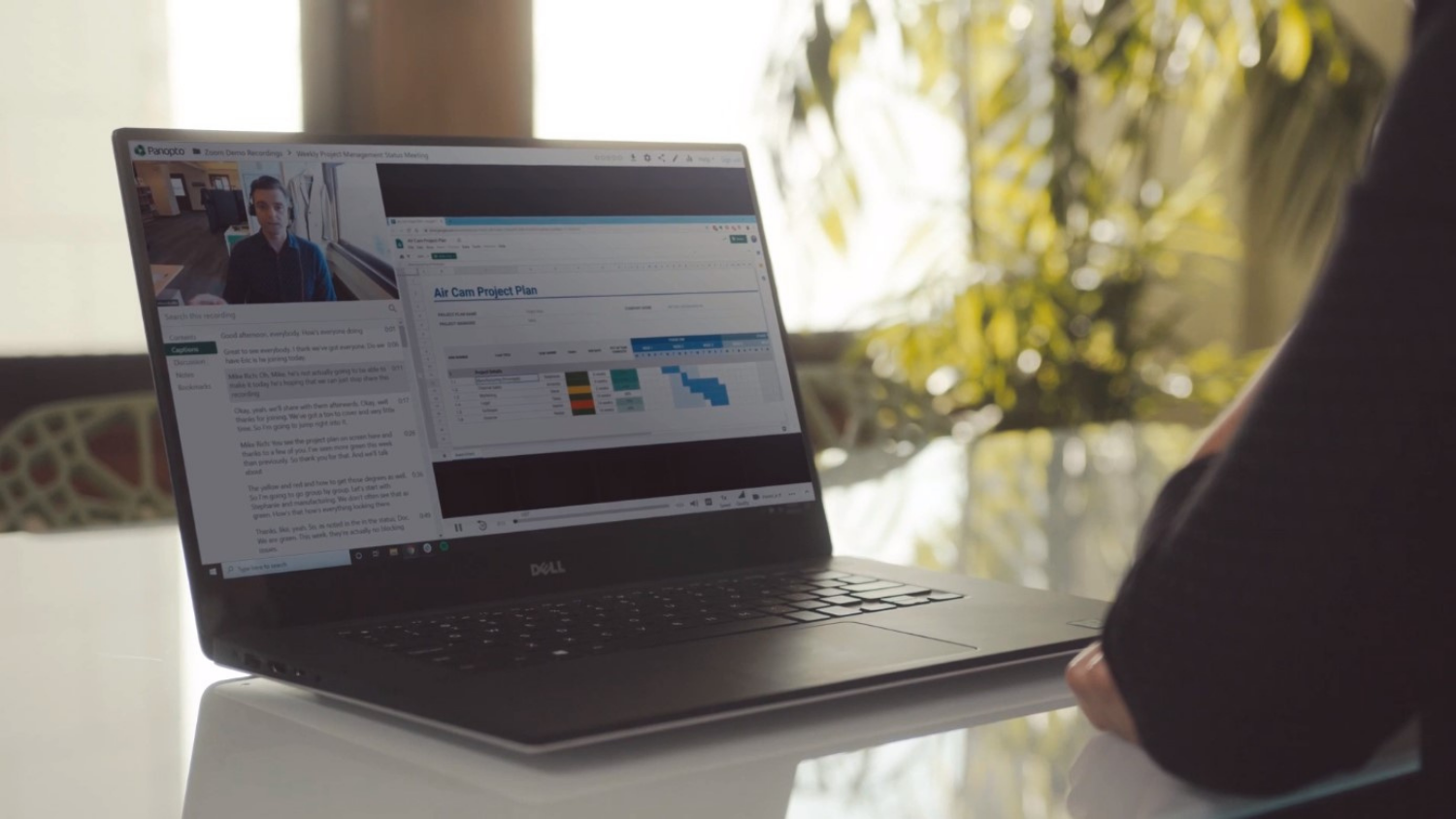DELTA Instructional Technologists Share Tips for Teaching Online

This spring, NC State instructors hustled to get their courses online and give students a fulfilling end to an unusual semester. As the university’s summer courses move online, those who teach them are preparing to do the same.
To help instructors get ready, we caught up with the DELTA’s Instructional Technology Training team. Throughout the year, Jill Anderson, Christopher Beeson, Yiling Chappelow and Arlene Mendoza-Moran craft workshops, lead trainings and develop resources that empower NC State faculty to understand and effectively apply a variety of learning technologies.
They’re sharing some tips, tools and resources to help instructors get course content online, deliver it successfully and promote student success.
Keep It Simple
Bringing technology into the learning environment can feel daunting at first. Mendoza-Moran is reminding instructors that it doesn’t have to be.
“The ‘best’ method of delivering lecture content is one that is manageable for the instructor and easy for students to access,” she says.
While many students and instructors are accustomed to live, synchronous class sessions, asynchronous delivery may work better in certain courses. By providing pre-recorded content like video or audio, students have the flexibility to access course material on their own and return to it at any time.
Beeson encourages online instructors to be overly explicit in how they organize their course content and present it to students.
“Consistency is key. Find a structure that works for you and use it consistently,” Beeson advises.
This structure should be easy for you and your students to understand. Rather than making students guess where to find class resources or what is expected of them, use action items and directive language to make it clear to students what they need to accomplish and how. Sometimes this can be as simple as starting your sentences with verbs or guiding students’ attention with bold headings.
Don’t attempt to master everything at once. Instead, start by learning one thing well and expanding on it later. As you pick up new skills, this foundation will be there to continuously build on.
Find the Right Tools
Online learning is greatly enhanced when the right tools are employed. Even though certain tools are in the mainstream or close at hand, they might not be right for you or your students. Meanwhile, the most effective tools might also be just a click or two away. Look to your learning objectives when deciding what to introduce.
“The tool is always going to follow the pedagogy … I’d never recommend a tool for use without knowing what an instructor is trying to accomplish and what they want their students to be doing,” says Anderson.
She suggests identifying the types of interaction you will use in your online course. These could be student to student, student to content, and student to instructor. From there, determine how you want to have these interactions. The right tools will follow these decisions.
Chappelow suggests employing similar techniques when building a course in Moodle.
“Think about what you really want to achieve from your Moodle course. What is your objective for this course? Planning out exactly how you are going to get to your end result is essential. The Course Planning Guide template allows you to structure your content before you put it into Moodle,” she says.
There are many great tools to consider when delivering material asynchronously. My Mediasite and Zoom recordings are ways that instructors can provide video content for students to view at their own pace. For those who prefer not to use video, text blocks, annotations and group forums are also effective options.
To boost engagement, interactive tools like PlayPosit and H5P prompt students to reflect on course material as they learn it with embedded questions and quizzes. Automatically connect their responses to your Moodle grade book for added incentives and streamlined grading.
Beeson understands that it can sometimes feel tedious to make videos in one platform and upload them to another. In these times, he recommends Poodll. Housed in Moodle, the video and audio recorder allows instructors and students to record audio and/or video from their phone or computer and submit them immediately — no downloading or uploading necessary. The media files are stored on Poodll’s cloud, allowing Moodle to run smoothly. Users can make video and audio recordings in discussion forums, assignment submissions and more.
Mendoza-Moran wants faculty to know that there are plenty of options out there that can be tailored to fit their needs and those of their students.
“Zoom is not the only (or even the preferred) way to deliver lecture content. Some people find it intimidating to record themselves giving a lecture, and that’s okay. There are lots of lower-bandwidth ways to deliver content: narrated PowerPoint slides, audio ‘podcast’ style recordings, or even just a document or Moodle page with lecture content typed out to go along with your slides.”
As you explore new tools and apply them to your course, make sure your material is accessible to all learners. An easy way to achieve this is to provide alt-text or descriptions for all images used in presentation slides, web content and documents. When using video or audio, provide captions or transcripts. YouTube and Zoom cloud recording provide automatic transcripts and captioning, while Transcriptive is a cost-effective transcription tool that can be embedded into video editing software. NC State’s IT Accessibility Office also offers a captioning grant to assist faculty in creating accessible multimedia.
Maintain Communication
Courses taken online and at a distance rely on effective and consistent communication to build a sense of community and connection among students and instructors. It is important to consider when, why and how you communicate with students.
“Start out by communicating in a welcoming and supportive manner at the beginning of your course to set the right tone for the class. [Provide] a personal welcome letter/video and a syllabus so your students have a clear understanding of what they need to do or where to find the information and resources to get started successfully,” says Chappelow.
She recommends using the Online Course Syllabus template and Welcome Letter template to start planning your communications with students.
As you provide feedback to your students throughout a course, ask for theirs as well. Students can tell you whether or not your course is well organized and user-friendly. Colleagues can also be added to a course and share valuable insights. Asking for continuous feedback throughout the semester allows you to make appropriate changes and enhance the student experience before the course ends.
“This helps create a community of learners. Ask for constructive feedback, such as what works and what doesn’t,” says Chappelow. “Your students will be the experts!”
Explore Your Resources
It doesn’t matter if you’re new to online teaching or an expert — you don’t have to do it alone. DELTA provides a number of resources to help you along the way. Our instructional technologists are sharing their recommendations.
For those who are starting from scratch, look to the Moodle Quick Start Course Shell, a simple framework to design an online course with consistent design and easy navigation. The demo space is available to reference, and the Quick Start Course Shell User Guide provides step-by-step guidance for how to use it. To view real courses that have applied the framework, check out these examples from ENG 331 and LAR 221.
Once your course is set up, Getting Started with Moodle and the Teaching with Moodle self-paced course will teach you the basics or refresh your knowledge.
DELTA offers a catalog of live workshops to help NC State faculty teach with technology as well as an archive of on-demand, pre-recorded workshops that cover diverse topics like course design, student engagement and learning technology.
Need to walk through a technology’s features or learn a specific action quickly? Bite-sized introductions and refreshers are available on the DELTA LearnTech YouTube Channel. Browse its playlists for brief but informative lessons in Zoom, Moodle, MyMediasite and more. The DELTA LearnTech Knowledge Base also provides help articles on the full range of DELTA-supported learning technologies.
LearnTech Help Desk consultants are available to talk through your questions and share additional resources during extended hours. Call until 8 p.m. Monday through Thursday or from 11 a.m. to 8 p.m. on Sundays, and a skilled team member will be ready to provide one-to-one assistance. For LearnTech’s complete hours, visit their webpage.
Summer Shorts in Instructional Technologies is another great way to enhance your online teaching knowledge and skills. The series will offer online conference sessions, workshops and presentations to help you explore the latest in instructional technology and prepare you for future semesters. Stay tuned for more information about August’s events.
Additional Resources
“Improvement is iterative,” says Beeson. Here are some additional resources that can help you on your journey to online instruction:
- Tips from Faculty for Quickly Preparing to Teach Online
- Tips for Students to Prepare for Online Learning
- Top 5 Tips for Using Zoom Meetings
- Tips for Engaging Your Students from DELTA Instructional Designers
- Online Professor Angie Smith Gives Thoughts on Intentional Design in Courses
- Moving Class to Online: Tips from Professor Kim Allen
- Alternative Assessment Resources for Teaching and Learning Online
- Important Considerations for Teaching Online When That Wasn’t Your Original Plan
- Request an Instructional Consultation


